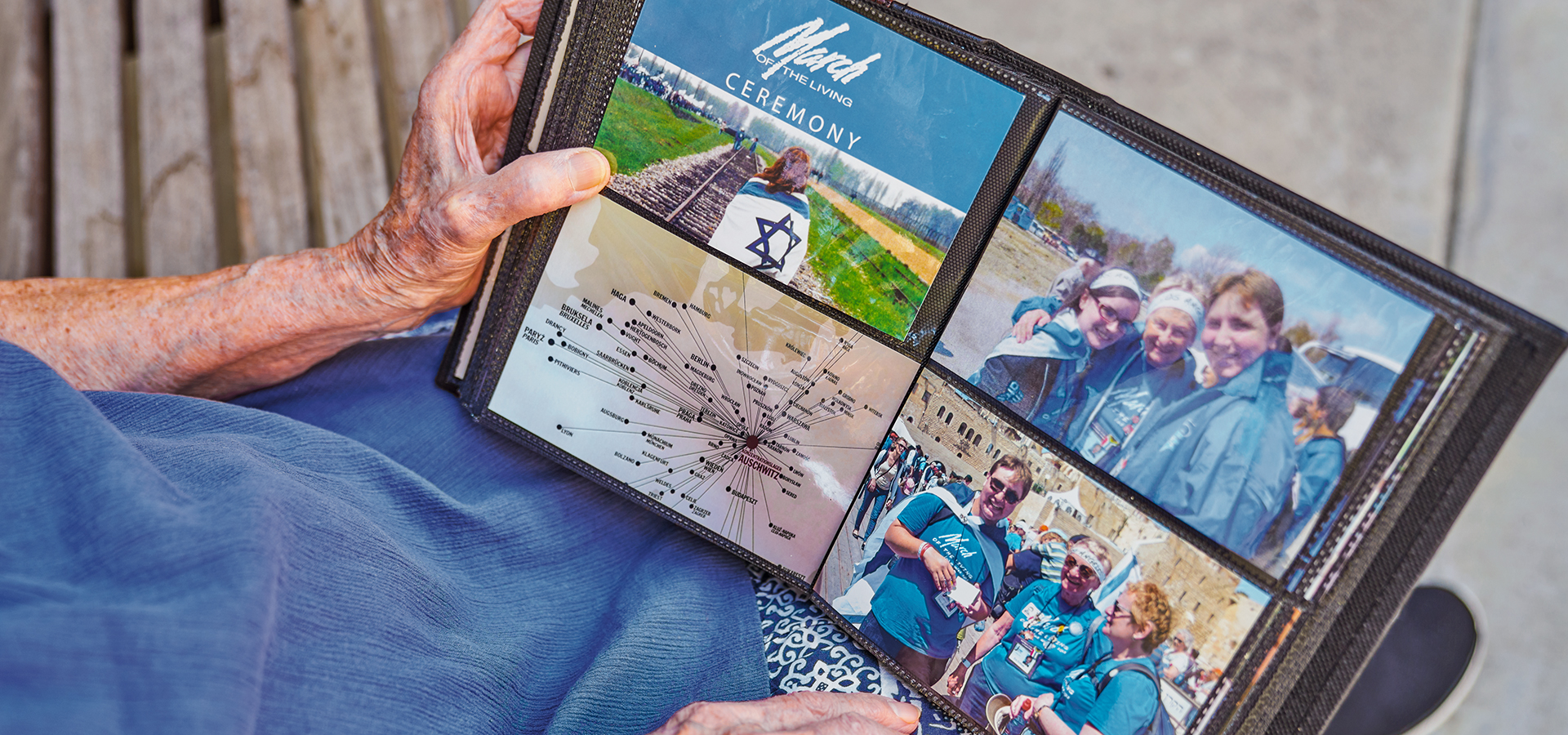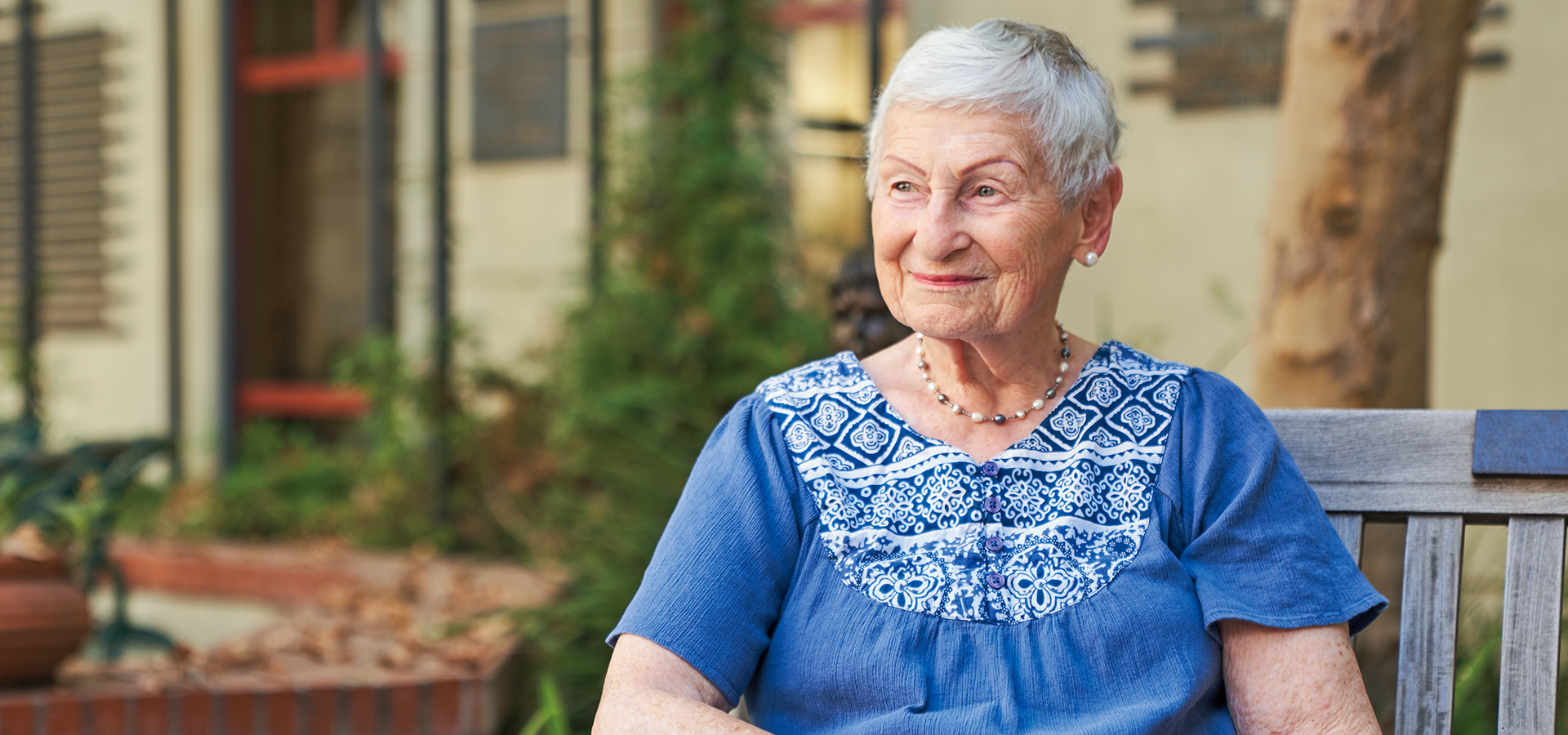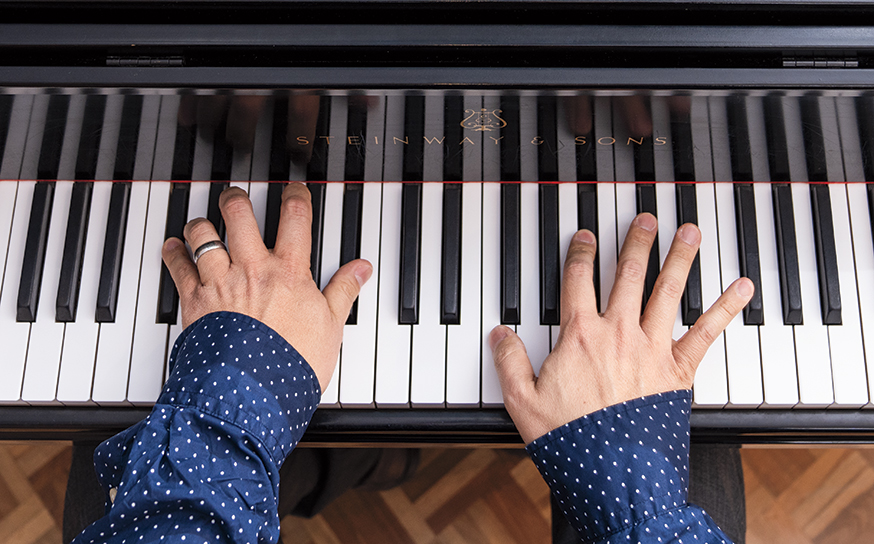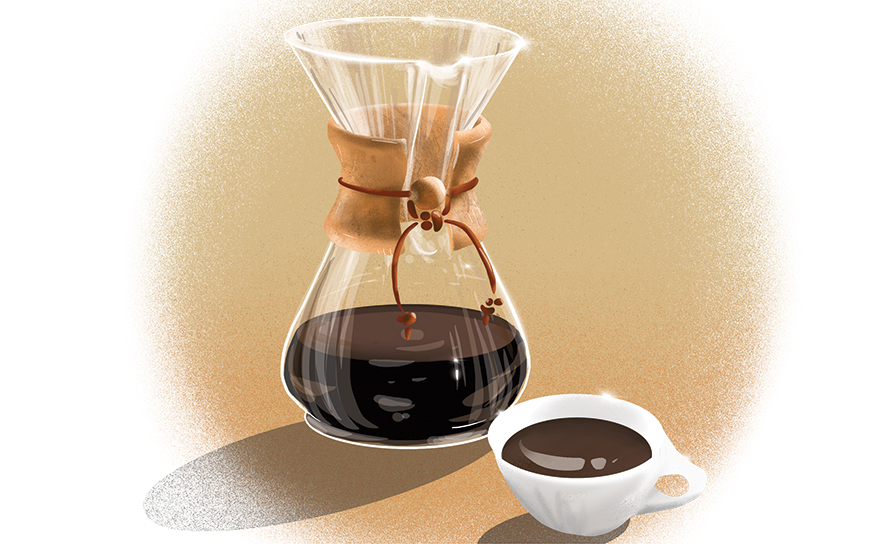Holocaust Survivor Eva Perlman Vows to Keep Telling Her Story
Woman on a mission.
-
CategoryPeople
-
Written byJane Ulman
-
Photographed byShane O’Donnell
It may have been eight decades ago, but Eva Perlman remains haunted by dark silhouettes of Nazi soldiers ascending the steep slopes of the lower Alps in Vichy-occupied France, approaching the village of Autrans. “I see them in my mind’s eye,” she says. “I still see them.”

Eva is sitting in the courtyard of Los Angeles Jewish Health in Reseda, the community where she’s lived since 2019. But 80 years ago, at age 12 and then Eva Hanna Gutmann, she was looking out the second-story window of an apartment her family rented in what they called “the yellow house.” As sirens blared, she stood there with her mother, Charlotte, and two younger brothers, all blond-haired and blue-eyed, belying their German Jewish roots. Eva’s father, Rodolphe, darker complected, had left only weeks earlier to fight with the French Resistance. It was July 1944.
A day or two later, they were startled by loud banging at the front door and the sound of German voices. “Madame, can you come downstairs?” Monsieur Ravaud, the Gutmanns’ landlord, called to Charlotte. She hustled the children into a bedroom and descended the staircase to face a Nazi colonel and his orderly. The officer was asking for a bedroom and meals. Charlotte spoke in feigned broken German, translating into French for the landlord, who could not refuse the request.
For the next two weeks, the colonel and his orderly slept in a room next to the three Jewish children. “We knew we were in some kind of danger, and we had to be noiseless and invisible,” Eva recalls. Charlotte, meanwhile, moved to a cot in the attic where she stood guard at the window every night. She knew Rodolphe could return at any moment, throwing stones at her window to alert her.
Eva was born in Berlin on May 18, 1932. By fall 1933, with Adolf Hitler the new chancellor of Germany and her father forbidden to work as a patent attorney, the family decided to move to Paris, where Rodolphe was offered a position by a non-Jewish colleague, René Plasseraud. Rodolphe left in September, settling in Courbevoie, a Paris suburb. Charlotte followed with Eva in December. Eva’s brother Ernest was born there in 1935.
In summer 1938, with Charlotte again pregnant, they moved to a larger villa in Le Vésinet, another suburb of Paris. A second brother, Raymond, was born in April 1939, and in mid-July, Rodolphe’s parents, Bertha and Joseph Gutmann, joined them.
On June 14, 1940, Nazi soldiers marched into Paris. Soon after, at Plasseraud’s request, Rodolphe moved to Massay, a village 135 miles south, taking with him important legal documents as well as Eva, 8, and Ernest, 5. He rented a small castle with turrets and a glass-roofed patio where he set up his desk and office chair. Charlotte remained in Le Vésinet with her younger son and in-laws.
“We knew we were being hunted, but my parents tried their best to make our life as normal as possible.”
In Massay, German bombers frequently flew overhead, prompting air-raid sirens to wail and the family to seek shelter in the cellar. Once a bomb exploded directly above the castle, shaking the cellar walls. When the all-clear signal sounded, they rushed upstairs to discover that a piece of shrapnel had pierced the glass roof of the veranda, embedding itself in Rodolphe’s chair. “Had he been there, he would have been killed instantly,” Eva says.
The Germans continued moving closer. Rodolphe, with Eva and Ernest, relocated 275 miles southeast to Lyon, renting an apartment in the suburb of Caluire-et-Cuire.
Charlotte, Raymond, and Rodolphe’s mother—whom they hadn’t seen for two years—joined them in late summer or fall 1941. Rodolphe’s father had died the previous January; his mother died a few months after arriving in Lyon.
In fall 1942 Charlotte traveled to the mountains above Grenoble, 72 miles southeast of Lyon, searching for a children’s home where Eva and her brothers would be safer. She visited dozens; all were full. Desperate, she visited one last home, called Clairefontaine, in Autrans. It too was at capacity with 30 children, but the owners, Geneviève and Roland Menthonnex, agreed to take the three children. The couple was later recognized by Yad Vashem, Israel’s official memorial to the victims of the Holocaust, as Righteous Among the Nations—a recognition for non-Jews who risked their lives to help save Jews.

Above: Eva with an album from her nine March of the Living trips, accompanying LA Jewish high school seniors on educational journeys to Poland and Israel. The experiences were transformative for her.
The two photos on the right, with Eva center, were taken in 2012. The photo lower left shows a map of railway routes the Nazis operated to bring cattle cars packed with Jews to Auschwitz. Lyon, where Eva and her family lived in the early 1940s, was one of the departure stations. “Had we been caught, we would have been taken directly to Auschwitz,” Eva notes.
•••
On a rare visit to see the children, in spring 1943, Charlotte received a telegram from Rodolphe: “Stay there. I am coming.” He arrived a few days later, and they rented the second floor of the yellow house, owned by the Ravauds, a non-Jewish couple in their 50s with two daughters.
“We knew we were being hunted, but my parents tried their best to make our life as normal as possible,” Eva recalls.
Still, when alerted by local residents of possible danger, Eva and her brothers were rushed to local farms for protection, arrangements her father had made with farmers he had befriended, while he and Charlotte hid in the forest. Other times the entire family escaped to the forest.
Rodolphe clandestinely listened to the BBC every night. On the evening of June 6, 1944, he learned that the Allies had landed in Normandy.
On July 14, 1944, Bastille Day, the Gutmanns hiked to a mountaintop overlooking Autrans for a picnic. Suddenly planes roared overhead. They assumed these were Allied aircraft until they saw bombs being dropped on a valley below. The family rushed down the mountain to hide in the forest. “If I am forced to die, I will die with a weapon in my hand,” Rodolphe announced. The next day he and two friends joined the French underground, which was based nearby.
The two Nazis embedded in the yellow house, hunting Jews during the day and returning for food and rest each evening, finally left. “It was a miracle they didn’t burn down the house and kill the residents,” Eva says.
In late August Charlotte received a message that Rodolphe was 50 miles away and in need of clothing and money. Placing the children back at Clairefontaine, she and a friend set out on bicycles. But as she sped down the mountain, the brakes on her bicycle failed, and she lay sprawled across the road, bloodied with a broken ankle.
Assistance eventually arrived, and Charlotte headed back to Autrans, fortuitously reconnecting with Rodolphe on the way. “The accident saved my mother’s life,” Eva says. If not for the fall, she would have missed him. Worse, Charlotte and her friend would likely have been stopped by the Nazis and executed as they were carrying men’s clothing and cash.
On October 10, 1944, Lyon was liberated, and the Gutmanns returned to their apartment. A year and a half later they moved back to Paris.
Eva returned to school, but as a Jew born in Germany, she felt like a second-class citizen, inferior and extremely timid. She struggled through her teenage years and beyond. After graduating high school, she spent a year in Israel, where she felt more free, and where her maternal grandparents had escaped after Kristallnacht. She returned to Paris and focused on becoming a pediatric nurse.
On June 23, 1953, Eva met Mel Perlman, an American who had been studying in Israel. “It was love at first sight,” Eva says. Less than six weeks later, on July 30, they married in a civil ceremony in Paris and two months later in a Jewish ceremony in Kansas City, Missouri, with Mel’s family.
Eva and Mel moved to Oxford, England, where Mel studied social anthropology and where their daughter Ilana was born in August 1957. Mel’s research then took them to Uganda. Their second daughter, Tamar, was born there in 1961 and son, David, in 1962.
Mel worked as an assistant professor at the University of California, Berkeley and then at Brock University in St. Catharines, Ontario, while Eva studied accounting. But in May 1988 he died of leukemia, and a year later Eva moved to Los Angeles.
Eva rebuilt her life. She had been content in the role of being Mel’s wife her entire marriage, but after his death, she says, “I had no choice but to develop into a whole person on my own.”
She worked in accounting, and in 2011 she participated on her first March of the Living trip, accompanying a group of Jewish Los Angeles high school seniors to Poland and Israel. The trip was life-changing. “I found a purpose,” she says, along with a reborn sense of confidence. She traveled with the Los Angeles delegation for nine years, until the pandemic hit, and hopes to travel again in 2025.
Eva holds steadfast to her belief that Holocaust stories should be shared—and remembered. She wrote a memoir, Eva’s Uncommon Life: Guided by Miracles, published in 2019 and available on Amazon. She also speaks frequently at the Museum of Tolerance and the Holocaust Museum LA, as well as at synagogues, churches and other venues.
At 92 and a grandmother of six and great-grandmother of nine, Eva is determined to stay active—she still drives, even after recovering from knee surgery—healthy, and to continue speaking.
“I strongly believe we have to tell our story before we die,” she says. “This is what I live for.”
Join the Valley Community









